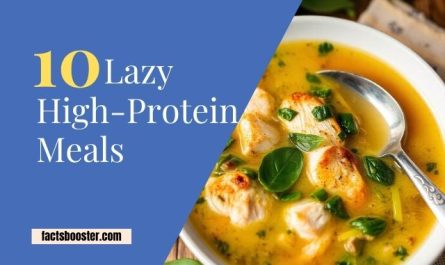Helicobacter pylori, a major culprit behind stomach issues, necessitates diligent treatment due to its contribution to ulcers and potential stomach cancer. Recognizing Helicobacter pylori eradication is pivotal for gastrointestinal wellness, this article delves into effective strategies, spotlighting traditional and emerging treatments alongside supportive dietary measures.
Key Takeaways:
- Understanding the impact of H. pylori on gastrointestinal health is crucial.
- Exploring both established and novel treatment avenues offers hope.
- Diet plays a complementary role in managing and treating H. pylori infections.
What is Helicobacter pylori
Helicobacter pylori, a bacterium found in the stomach lining, plays a pivotal role in several gastrointestinal diseases, including ulcers and gastritis. It infects by disrupting the protective mucous layer, causing inflammation and damage. Symptoms like stomach pain, nausea, and bloating may occur, with severe cases leading to ulcers or even cancer. Hence, accurate diagnosis becomes crucial for effective treatment and prevention of further complications.

Traditional Treatment Approaches
For Helicobacter pylori eradication, a dual approach is critical. This regimen typically pairs multiple antibiotics to outmaneuver the bacteria’s resilience against treatment with acid-suppressing drugs to aid stomach healing.
Antibiotic diversity aims to bypass potential resistance, ensuring a higher success rate. However, the emergence of antibiotic resistance makes follow-up testing indispensable to confirm eradication.
Emerging Treatment Strategies
Researchers have turned their focus toward innovative eradication methods for Helicobacter pylori. Novel antibiotic regimens are being trialed, aiming to counteract the increasing problem of resistance.
Excitingly, vaccine development and non-antibiotic therapies emerge as potential game-changers. These advances underscore the crucial role of ongoing research in addressing treatment hurdles, opening doors to tailored approaches for affected individuals.
Read more:
Supportive Dietary Strategies for Helicobacter Pylori Treatment
Addressing Helicobacter pylori involves more than traditional medicine; your diet plays a crucial role too. Certain foods have emerged as potent allies, offering symptom relief and potentially boosting treatment efficacy.
While not substitutes for Helicobacter pylori treatment, these dietary choices serve as complementary tools. Incorporating them could ease the eradication process, laying a foundation for faster recovery and long-term gastrointestinal health.
1. Probiotic-rich Foods
Incorporating probiotic-rich foods into your diet has shown promise in supporting Helicobacter pylori treatment. Such foods foster a healthier gut environment, crucial for combating infections. They potentially boost the effectiveness of standard H. pylori eradication protocols. By balancing the stomach’s microbiome, probiotics not only aid in symptom relief but may also enhance your body’s response to antibiotics. (1)
2. Fiber-rich Foods
Incorporating fiber-rich foods into your diet can play a pivotal role in managing Helicobacter pylori symptoms. These nutrients have shown significant promise in promoting digestive wellness.
They not only assist in maintaining a healthier stomach lining but also expedite the healing process post-eradication treatment. The inclusion of whole grains, fruits, and vegetables boosts gut health, making it an essential strategy for those combating H. pylori. (2)
3. Low-acid Foods
Consuming low-acid foods can significantly reduce discomfort in your stomach lining, often irritated by Helicobacter pylori. These dietary choices, including bananas, melons, and leafy greens, have shown potential in soothing the stomach. (3)
They lay the foundation for a healthier digestive environment, vital for those battling the infection. This shift towards a gentler diet may not only ease symptoms but also assist in the broader treatment regimen.
4. Lean Proteins
For those undergoing Helicobacter pylori treatment, incorporating lean proteins into your diet could prove invaluable. These essential nutrients support the body’s healing processes. They foster a more efficient recovery. It’s crucial to prioritize lean options such as chicken, fish, and plant-based proteins.
The objective lies in enhancing treatment efficacy while nurturing overall digestive health. This dietary shift not only aids in combating H. pylori but also lays the foundation for a stronger, more resilient system. (4)
5. Garlic
Garlic has emerged as a potent foe in the battle against Helicobacter pylori. Studies have shown that its antimicrobial properties can inhibit the bacteria’s growth, potentially aiding in the eradication process.
Introducing garlic into your meals might not only enhance flavors but also contribute to bacterial suppression, offering a complementary angle to conventional H. pylori treatment methods. (5)
6. Green Tea
Researchers have discovered that green tea offers promising attributes in the battle against Helicobacter pylori. This beverage, rich in antioxidants, has been observed to inhibit the growth of H. pylori effectively. Studies underscored its potential, indicating a reduction in bacterial adherence to the stomach lining. Embracing a cup or two daily could be a strategic move in your eradication efforts, complementing conventional h pylori treatment.
While not a standalone remedy, integrating green tea into your diet might support the overall treatment process. This finding aligns well with the search for natural remedies that can assist in managing this stubborn infection. (6)
7. Cranberry Juice
Evidence has illuminated the role cranberry juice plays in combatting H. pylori. Studies have found that compounds in cranberry juice prevent the bacteria from adhering to the stomach lining.
This crucial action reduces the risk of infection and supports overall stomach health. The significance of such findings underscores cranberry juice as a beneficial complement in H. pylori treatment strategies.
8. Licorice Root
Licorice root has been studied for its potential benefits against Helicobacter pylori. Research suggests that it might have therapeutic properties that help in reducing stomach irritation caused by this infection.
Licorice root acts by potentially offering a protective coating to the stomach lining, thereby aiding in the mitigation of symptoms associated with H. pylori. Its antimicrobial effects could support the eradication efforts, making it a valuable addition to traditional treatment strategies.
Who Is at Risk for H. pylori Infection
Diverse factors elevate your risk for Helicobacter pylori infection. Living conditions that involve crowded spaces and poor sanitation can significantly heighten exposure. Close contact behaviors, such as sharing utensils, further advance transmission risks.
Variations in geographic location and socioeconomic status also play critical roles, alongside age effects, with older individuals more frequently afflicted. Awareness and preventive steps are crucial for these groups.
1. Living Conditions
Crowded living conditions significantly heighten the risk of Helicobacter pylori transmission. In areas where people reside in close quarters, the chance for this bacterium to spread from one individual to another escalates.
H. pylori thrives where hygiene is compromised, particularly in the absence of clean water. Such environments facilitate its transmission through oral-oral or fecal-oral routes, making eradication efforts all the more challenging.
2. Close Contact
H. pylori spreads through direct contact with an infected person’s saliva or other bodily fluids. Sharing utensils, for example, is a common way this bacteria finds new hosts. It’s not just about sharing a meal; it’s about the microscopic invaders hitching a ride from one person to another.
Consequently, households where these practices are common may witness higher rates of infection, underscoring the need for personal hygiene and caution in close interactions.
3. Geographic Location
The risk of encountering Helicobacter pylori heavily depends on where you find yourself in the world. Prevailing conditions in certain regions might expose you to a greater likelihood of infection.
Those residing or visiting areas noted for high H. pylori prevalence need to be especially vigilant. Understanding the geographical nuances of H. pylori distribution can guide preventative measures, reducing the chance of stomach-related issues linked to this infection.
4. Socioeconomic Status
Your risk for Helicobacter pylori infection may hinge heavily on your socioeconomic status. People with limited access to healthcare often face challenges in getting diagnosed or treated for H. pylori.
Similarly, those living in crowded or substandard conditions might find themselves at a higher risk due to the ease of bacterial transmission in such environments. Thus, socioeconomic factors play a critical role in the prevalence of H. pylori infections, making it crucial for targeted intervention and support.
5. Age
Age significantly influences the risk of developing Helicobacter pylori infection. Studies have shown that older individuals tend to harbor this bacterium more frequently. This trend, researchers suggest, could be tied to prolonged exposure to the pathogen over many years or weaker immune responses that come with advancing age.
Notably, the increased prevalence in mature populations underscores the importance of targeted screening and treatment strategies to manage H. pylori effectively among these age groups.
Conclusion
In summary, tackling Helicobacter pylori infection demands a combination of proven treatments and promising new strategies. From antibiotics to dietary adjustments, effective management caters to eradicating this stubborn bacterium. If you suspect an infection, promptly consulting a healthcare provider can lead to a tailored treatment plan. Let’s remain hopeful as research continues to unveil innovative eradication methods, ensuring future successes in combating H. pylori.


